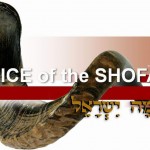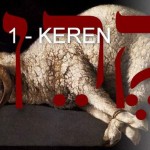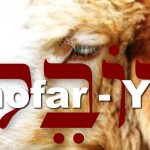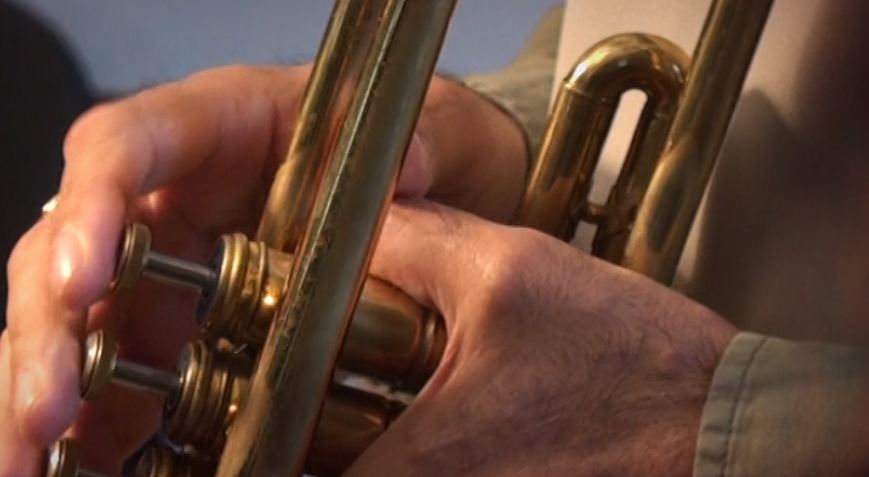The Calling of Shofar /part 1/
The first time our fathers heard the shofar calling out from the heaven was in the Sinai desert. All these years since then, its amazing voice has been accompanying Israel in the countries where the Jewish peoples have been scattered. Again and again for over 3 thousand years the Jews have been blowing the horn of a sacrificial animal in all the synagogues around the world, thus fulfilling the commandment of God to celebrate the Feast of Trumpets – Yom T’ruah.
Since the time when Yuval (Jabal), the son of Lamech, the son of Methushael, the son of Mehujael, the son of Irad, the son of Enoch, the son of Cain, the son of Adam had become the father of all who play the harp and flute (Gen.4 :17-21), the creative genius of his descendents gave birth to many musical instruments. For millennia, skilled craftsmen have been working hard in their desire to find harmony which was lost by Adam in the Garden of Eden, to bring it back through the perfection of whimsical musical instruments. Their design became more and more complicated, the technological processes changed, new materials and even electricity was used …
The Voice of Shofar /Trailer/
Since the time it was shown to Abraham the shofar remains unchanged. Its design nor its construction have changed, its shrill voice remains – shouting, calling, bearing good news.
However, in your Bible you will not find an instrument called «shofar». In most translations, unlike the Hebrew original, it is replaced by the word “trumpet”. So there is no any difference between a silver trumpet and a horn for blowing taken from a sacrificial animal.
In the original text they are “hatsotsra” and «shofar». Sure, between those two instruments there is some kind of similarity: one might say, both the horn, and the silver trumpet have some mark of personality. The sounds produced by these wind instruments contain this mark. The air blown out, that has just been “the part” of a trumpeting man, now becomes a voice expressing his feelings, emotions, thoughts …
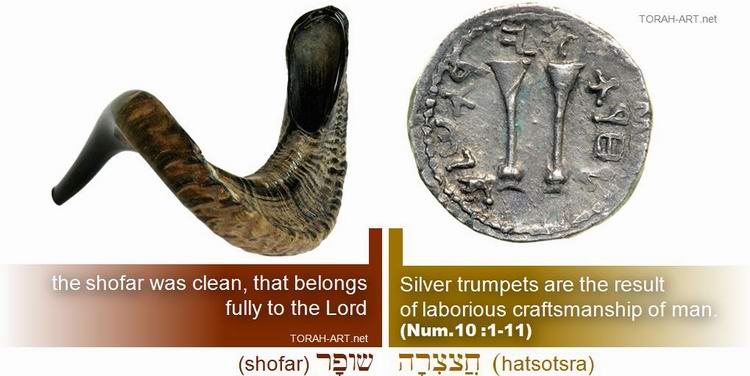 But there are some much more significant differences:
But there are some much more significant differences:
– Silver trumpets are the result of laborious craftsmanship of man. (Num.10 :1-11): “Make thee two trumpets of silver, engraved make them” – so God commanded Moshe.
– originally from the very beginning the shofar was clean (as taken from the pure animal dedicated to the burnt offering, that belongs fully to the Lord).
 – Silver needs melting and purification. Only then it becomes perfect and pure. So for a man to stand before the Almighty One, he should be cleansed like a trumpet of silver. The trumpet, in a sense, was to represent a man in front of the Creator.
– Silver needs melting and purification. Only then it becomes perfect and pure. So for a man to stand before the Almighty One, he should be cleansed like a trumpet of silver. The trumpet, in a sense, was to represent a man in front of the Creator.
As for the musical instrument to represent God, this would be certainly the shofar.
The Creator talks to His people through blowing the shofar, i.e. through the sacrifice (because the shofar is the horn of a sacrificial animal).
Wherever it is said about the voice of the shofar, it is used only in singular, pointing to the Creator, who is the Only One. (Everywhere in the Scriptures the voice of the shofar is in singular, regardless of the number of those trumpeting the shofar).
Thus, in the combination, “kol ha-shofar,” the voice of the shofar – “shofar” is used with the definite article “ha”. This article points to a one-of-a-kind instrument, the shofar that sounds from the heaven, ha-shofar.
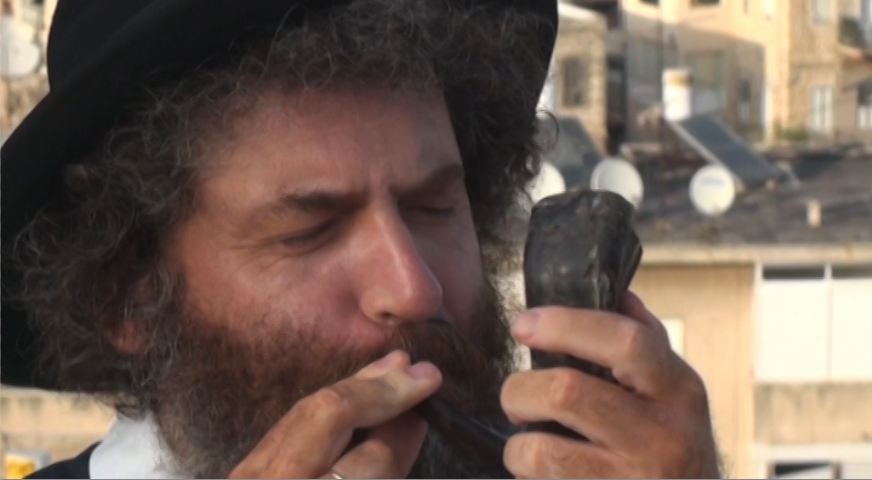 The word «shofar» is used, in the singular, while the word «hatsotsrot» (silver trumpets) is used only in the plural.
The word «shofar» is used, in the singular, while the word «hatsotsrot» (silver trumpets) is used only in the plural.
The horn, as a musical instrument in the original text of the Bible (in Hebrew) has three different names: “keren”, “shofar” and “yovel”. In general cases, the most commonly used name of the blowing horn is the shofar. But in specific situations in the Scriptures the shofar is called differently so to cover more completely its certain properties, the nature of its action, its message.
The Voice of Shofar. /purchase the movie/
video SHOFAR EXPERIENCE
Listen to the ancient Jewish prayer from Psalm 63. Singing and blowing shofar Ephraim Kalish, keyboard Daniel Kruglov
When two or even all three names of a horn are found in the same episode of the Scriptures, this points to the particular action of the shofar, in cases where supernatural complex processes take place at the same time, when each name has its own goal, though acting in unity and harmony .
see also Shofar Calling /KERERN – part 2/
————————————————————————————–
DONATE to TORAH-ART PROJECT through Return to Zion Community
————————————————————————————–
Especially for the holiday of Rosh Hashanah (Zichron Truah) I developed a collection of prints for my studio amen-design.com
